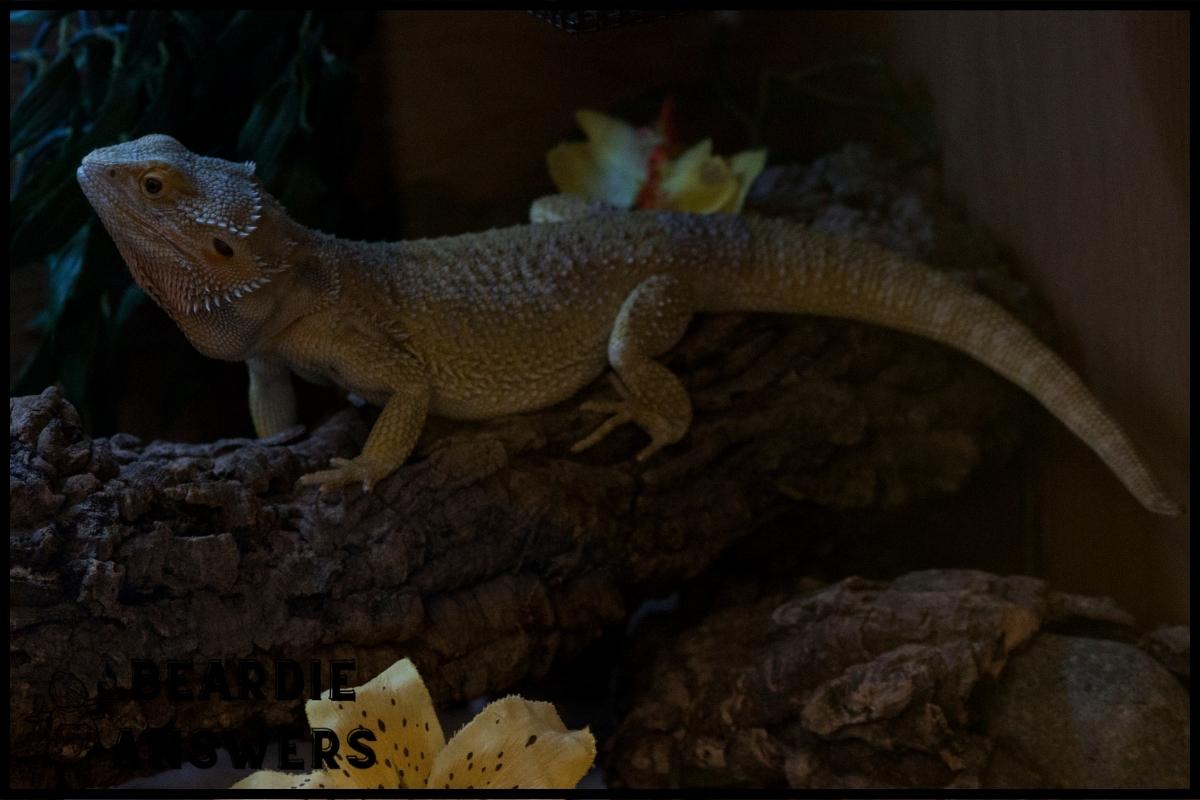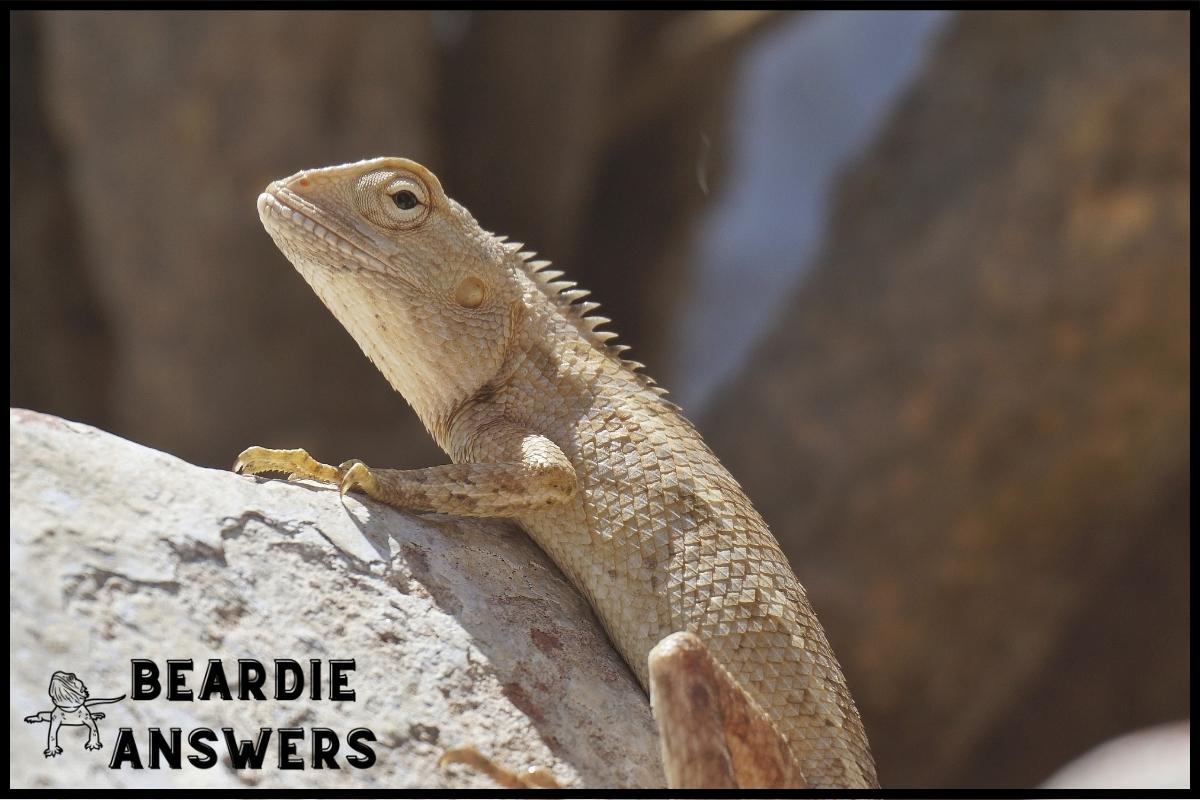Bearded dragons can continue to grow for up to 18 months, with males typically growing slightly larger than females. Growth rates can vary depending on factors such as diet, genetics, and environment. Providing adequate lighting, a balanced diet, and a spacious enclosure can help ensure that your bearded dragon grows at a healthy rate.
What You'll Learn
Lifespan Of A Bearded Dragon
As the sun rises, so does the life of a bearded dragon. As majestic as their namesake suggests, these fascinating lizards can grow up to 2 feet and live for 10 years or more with proper care!
But how long do they take to reach this size? With proper dietary needs and temperature control, bearded dragons can continue growing for 18 months or more.
The rate at which your beloved pet grows depends on several factors such as environment, health status, age, sex, diet and genetics. A healthy adult bearded dragon may be able to keep growing until it is two years old while an unhealthy one will stop sooner due to stress-induced growth stunting.
The same goes for young hatchlings; some may outgrow others in terms of both length and weight depending on various conditions like food availability and environmental temperature.
Naturally, male dragons are larger than females but the difference isn’t always that noticeable due to varying genetic backgrounds – something worth keeping in mind when purchasing a new beardie!
To ensure your pet’s optimal growth, it’s best to provide them with ideal living conditions including regular UVB light exposure along with high quality nutrition and hydration levels. With this combination of elements working together harmoniously, you’ll have yourself a fully grown beauty before you know it!
Factors Affecting Bearded Dragon Growth
Bearded dragons can continue to grow for up to 18 months. Factors that influence their growth include temperature control and lighting requirements.
Maintaining a suitable environment is essential to ensure your bearded dragon maintains healthy, optimal growth. Temperature control should be monitored closely as the basking spot’s temperature should range between 95-105°F (35-41°C). Additionally, it is important to note that the temperatures gradually decrease from top to bottom with the cool side of the enclosure being no lower than 75°F (24°C) and warm side reaching at least 85°F (29°C).
When considering lighting requirements, it is important to provide UVA/UVB light in order for them to synthesize vitamin D3 which helps absorb calcium effectively.
Here are some bullet points summarizing what was discussed:
- Monitor temperature closely, ranging from 95-105 °F (35-41 °C), decreasing from top to bottom.
- Provide ample UVA/UVB light for synthesis of Vitamin D3 and absorption of Calcium.
- Maintain a suitable environment for healthy, optimal growth.
Finally, providing adequate nutrition also plays an integral role in promoting healthy development in bearded dragons.
Feeding Habits Of Bearded Dragons
Bearded dragons are truly a sight to behold, with their distinct and captivating features. From the color of their scales that range from yellow-orange to dark brown, to their spiny ridges along their back – these beloved reptiles have become popular pet choices for many around the world.
But what do bearded dragons need in order to stay happy and healthy? Feeding habits must be taken into consideration when caring for these majestic creatures.
Bearded dragons should primarily consume live insects such as crickets, mealworms, wax worms, roaches and other small invertebrates; they may also occasionally eat some fruits and vegetables like collard greens or strawberries. To ensure proper nutrition, it is important that you supplement your dragon’s diet with calcium powder at least once a week.
The size of one’s enclosure will determine how much food needs to be offered since larger enclosures require more frequent feedings than smaller ones.
When feeding your beardie, make sure not to overfeed them; this can lead to various health problems down the line. It’s best practice to remove any uneaten prey items after about 30 minutes as well – making sure there isn’t an excessive amount of bugs running around could potentially cause stress on your reptile friend!
With careful attention paid towards dietary needs and optimal enclosure size, providing nourishment for your scaly pal won’t be too difficult of a task.
Exercise And Activity For Bearded Dragons
Now that we have discussed the feeding habits of bearded dragons, let’s move onto their exercise and activity needs. In order to ensure they live a high-quality life, it is important to provide them with adequate space for movement. This means providing an enclosure size appropriate for their growth. Additionally, exposure to natural sunlight or UVB lighting can help keep them active and healthy.
Here are three things you should consider when creating an environment suitable for your bearded dragon:
- Provide enough room in the enclosure so your pet has ample opportunity to explore and roam
- Make sure there is plenty of hiding areas within the enclosure
- Create a basking spot where temperatures reach 95°F (35°C) during the day
By following these steps, you’ll create an ideal home for your bearded dragon allowing them to get necessary exercise and remain active throughout its lifespan. Learning how to measure growth in bearded dragons will be helpful in determining if their environment meets all of their requirements.
Measuring Growth In Bearded Dragons
Let’s talk about growth rate and monitoring size in bearded dragons.
We can look at how fast they grow and how to keep track of their size.
Growth Rate
Growth rate is an important factor to consider when measuring the growth of bearded dragons.
While they can continue to grow for up to 18 months, factors such as proper temperature control and a healthy shedding cycle will help ensure that your pet dragon grows at its optimal pace.
Knowing how long bearded dragons typically grow is beneficial in order to provide them with the right nutrition, environment and care needed for them to thrive.
It’s essential that you track their progress over time in order to make sure they’re growing healthily.
Monitoring Size
Monitoring size is an important part of measuring growth in bearded dragons. To ensure that your pet dragon grows at its optimal rate, you’ll need to keep track of how big they’re getting over time.
This means monitoring their dietary needs and the size of their enclosure as they grow in order to make sure it’s providing enough space for them to move around comfortably. Keeping close tabs on their progress will help them stay healthy and happy throughout their growing stages.
With proper care and attention, you can be confident that your beloved pet will reach its full potential!
Health And Care For Bearded Dragons
Caring for a bearded dragon requires providing it with the right environment and diet. Lighting requirements, temperature control, and proper nutrition are all important factors to consider when creating an optimal habitat for this type of reptile.
It’s essential to create an enclosure that mimics its natural environment as much as possible. The best way to do this is by setting up a UVB light source that provides 12 hours of daylight and 12 hours of darkness every day, along with maintaining consistent temperatures between 85-95°F within the enclosure.
Temperature regulation can be achieved through both artificial heating elements or ceramic heat emitters installed on one side of the tank and thermometers placed in multiple spots to monitor the temperature levels throughout the enclosure.
In addition to lighting and temperature control, many owners also use supplements such as calcium or multivitamins to ensure their pet’s dietary needs are being met. Bearded dragons should eat primarily live insects supplemented with leafy greens like dandelion greens or collard greens 2-3 times per week.
It’s important to keep your bearded dragon healthy while you have them in your care – regular vet visits are necessary if any health issues arise during their growth cycle from hatchling stage until they reach their full size at 18 months old. Providing adequate food sources, keeping humidity low (no higher than 40%), frequent baths for hydration, and monitoring overall behavior will help make sure your beardie stays happy and healthy!
Conclusion
In conclusion, it is essential to take good care of your bearded dragon in order for them to reach their full potential. By providing a healthy diet, plenty of exercise and activity, and the right environment, you can ensure they stay happy and healthy while they grow.
It’s important to remember that males typically grow slightly larger than females – up to 18 months of growth could mean an extra few inches! With proper care, you can watch as your bearded dragon grows into its fullest size with no health problems along the way.

Hi! My name is Bryan, I am the “one behind the words” here are BeardieAnswers.com. I believe that providing quality care and nutrition is the best way to ensure the health of your pet. Every beardie is special and deserves the best care and attention. If you have questions about your bearded dragon, please don’t hesitate to ask! View My Full Author Page




